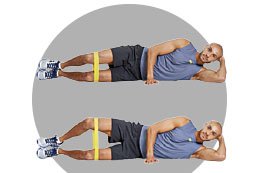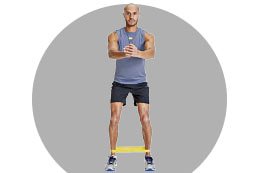Your 10-Week Half-Marathon Go-To Guide!
Run your way to 21.1 kilometre glory with this 10-week, time-based training plan!
Almost any coach will tell you that if you want to run competitively, you must focus on running. But what if your race-day goal isn’t to nail a PB or win an award? What if you run because it’s one of many things you like to do to stay fit?
If that’s you, you’re in good company. A new study co-sponsored by Running USA examined the habits of millennial runners (born between 1980 and 2000), who make up 43 per cent of the running population. Most say their primary reason for running is to improve or maintain health or fitness – not to compete – and 94 per cent of them participate in other sports.
Click here to download your free PDF training programme.
They still enter races: 82 per cent of 20- and early-30-somethings who run say they want to do a half marathon in the next year. But the halfs that draw the most millennials emphasise fun, with pre- and post-race parties, on-course music, and social-media hoopla.
“Runners of all ages can learn from millennials,” says Scott Bush, Running USA’s director of communications, as many young runners take a well-rounded approach to training. Here’s a plan for anyone who wants to train for 21.1 like a millennial – running without giving up the other activities you love.
TIME-BASED 10-WEEK 21.1KM TRAINING PLAN
Garth Dorman, running coach at Embark (embark.co.za), created this plan for the Two Oceans Half Marathon. It can apply to any level of runner, whether you’re looking to PB or finish your first half. Begin training only once you’re comfortable running three to four times a week, with a total weekly mileage of 20 to 30km.
Click here to download your free PDF training programme.
CROSS-TRAINING FAVES
Only 6 per cent of millennial runners just run. The percentages on the right reflect the popularity of other activities, according to the Millennial Running Study. Incorporating these other types of exercise keeps injuries and boredom at bay. Running coach Elizabeth Corkum explains how runners benefit from these popular workouts.
49% WEIGHT TRAIN
“I’m a huge advocate of weight training because I find that most runners are extremely weak in their hamstrings and their glutes and rely on their quads to do a whole lot of the work,” Corkum says. This imbalance can lead to injuries like IT band syndrome and runner’s knee. Corkum favours kettlebells, which help activate stabilising muscles that wouldn’t be engaged otherwise.
43% HIKING, ROCK CLIMBING, BACKPACKING
Hiking and backpacking are great for active recovery, especially on uneven trails where small stabilising muscles have to activate, Corkum says. And rock climbing is a good total-body workout that strengthens areas running does not.
31% AEROBICS, FITNESS CLASSES
Classes that blend strength-training, flexibility work, and/or plyometric moves improve all-around fitness in ways running does not. Yoga especially helps with strength and range of motion, Corkum says: “It’s great for a rest day – think of it as bonus stretching.”
38% CYCLING
Easy cycling can speed recovery from a tough workout, as it increases bloodflow to your legs without the pounding of running. Avoid hard efforts during half training unless you’re cycling to stay fit while rehabbing an injury, Corkum says.
24% SWIMMING
Freestyle swimming is an excellent active-recovery workout that’s easy on the joints. “It also helps you get really in tune with your breath,” Corkum says. “I think that awareness is then helpful when you are powering up a hill or sprinting on a track.”
Click here to download your free PDF training programme.
THE STRENGTH TO SUCCEED
Perform one of these quick sequences of exercises after each run to beef up running-specific muscles and prevent common injuries.
Routine A – Standard Core Sequence
These moves work your abs as well as your hips, glutes, lower back, and hamstrings – all the muscles that help you maintain proper running form even when you’re fatigued. “I get hurt when I stop doing this routine consistently,” says Jason Fitzgerald, founder of StrengthRunning.com.
Do each exercise for 45 seconds. Go through all the moves twice; it will take about nine minutes. After a few weeks, increase to one minute for each.
Plank

● Lie on your stomach, then prop your weight on your forearms and toes, forming a straight line from head to feet. Hold.
Bridge

● Lie on your back with your knees bent and feet flat on the ground. Lift your hips, forming a straight line from shoulders to knees. Extend your right leg, hold for several seconds, then lower and repeat with your left leg. Continue alternating. Make sure your hips don’t dip and your butt doesn’t sag.
Side Plank

● Lie on your left side, then lift your body so your weight is on your left forearm and the side of your left foot, forming a diagonal line from head to feet. Hold. To make it harder, add a lateral leg raise: lift your right leg about 45 degrees, hold for a few seconds, then lower. Repeat 5 to 10 times. During the second set, switch to your right side.
Modified Bicycle

● Lie on your back, legs extended. Raise your left leg and bend it 90 degrees. Raise your right leg five to eight centimetres off the floor. Hold for several seconds and switch. Continue alternating. Keep your lower back in a neutral position: if you slip a hand under the small of your back, make sure your back neither presses into the floor nor lifts up off your hand.
Supine Leg Lift

● Lie on your back with your weight on your elbows and heels. Lift your hips and keep a straight line from your toes to your shoulders. Lift one leg about 20 centimetres off the ground, hold for several seconds, then switch to the opposite leg.
Modified Bird-Dog

● Start on all fours with a flat back (table position). Lift your left arm so it’s parallel to the ground. At the same time, lift your right leg so your thigh is parallel to the ground and your shin is perpendicular. Your knee should be bent at 90 degrees and your glutes should be activated. Hold for several seconds and switch sides. Continue alternating.
Routine B – I.T. BAND REHAB SEQUENCE
Fitzgerald developed this routine after he was sidelined for six months in 2008 with a severe injury to his iliotibial band (IT band), the connective tissue that runs along the outside of the leg. He still does these moves weekly and recommends them to all the runners he coaches, because weak hips and glutes can cause IT band inflammation (which leads to knee pain) and other leg injuries. Do the seven exercises in a row without rest; it will take 10 to 15 minutes.
One-Legged Squats

● Standing on one leg, squat down so your thigh is almost parallel to the ground. Keep your spine in a neutral position and keep the motion slow and controlled, ensuring your knee does not collapse inward. Do five to 10 reps, then switch sides.
Leg Raises

● Lie on your left side with a TheraBand around your ankles. Lift your right leg about 45 degrees in a controlled manner, then lower. Do 30 reps, then switch sides.
Clamshells

● Lie on your left side with your knees together and a TheraBand around your lower thighs. Your knees should be bent 90 degrees, with your thighs at a 45-degree angle from your body. Keeping your pelvis still and your feet together, open your knees like a clamshell in a slow, controlled manner. Do 30 reps, then switch sides.
Hip Thrusts

● Lie on your back, knees bent and feet flat on the ground. Lift your hips, forming a straight line from shoulders to knees. Lift one leg so all your weight is on the other leg and your back. Lower your butt almost to the ground and thrust upward by activating your glutes. Do 25 reps on each leg.
Side-Steps / Shuffle

● With a TheraBand around your ankles and your knees slightly bent, take 10 steps laterally. The band should be tight enough so it provides constant resistance. Still facing the same direction, take another 10 steps back to your starting position. That’s one set; do five.
Hip Hikes

● Stand on your right foot with your left leg slightly bent. Drop your left hip so it is 15cm below your right hip. Activate your right hip muscle to lift your left hip back to its starting position. Do 20 reps, then switch sides.
Iron Cross

● Lie on your back with your arms out to your sides and legs straight. Swing your right leg over your torso and up toward your left hand. Repeat with your left leg. That’s one rep; do 20.
Photographs by Mitch Mandel
Click here to download your free PDF training programme.
READ MORE ON: half-marathon two-oceans two-oceans-half-marathon

